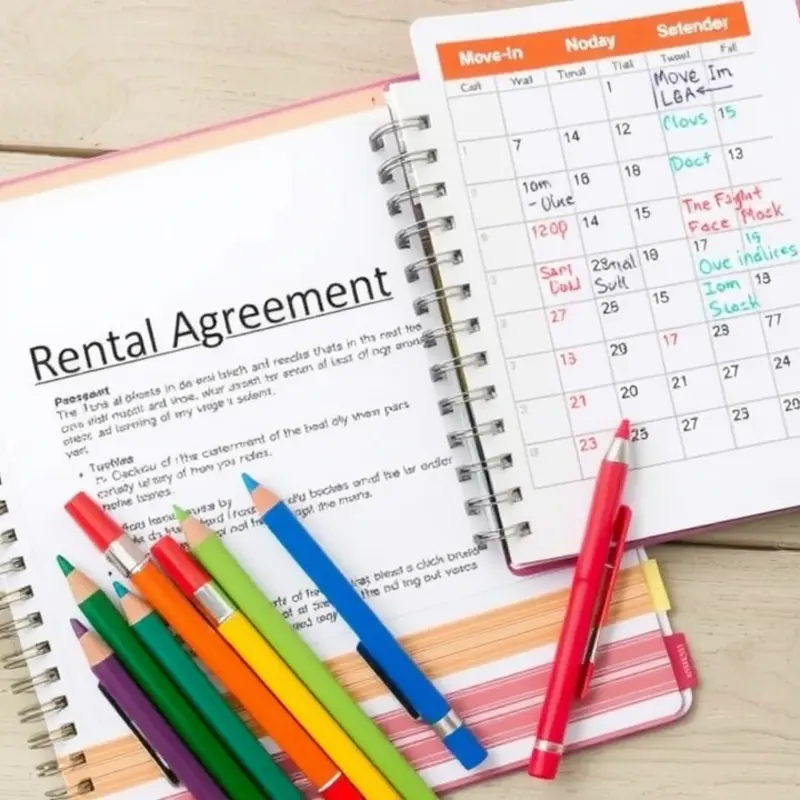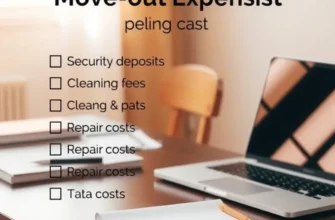When stepping into the world of renting, understanding the differences between a lease and a rental agreement is crucial. Many young professionals, students, couples, and families find themselves facing this decision for the first time. A lease typically binds you to a property for an extended period, usually a year, ensuring stability in your living situation. However, a rental agreement is often more flexible, allowing you to commit on a month-to-month basis. Each option has its perks and drawbacks, and knowing these could save you financial stress down the line. In today’s rental market, being well-informed can empower you to make the best choice tailored to your needs. Let’s dive deeper into the specifics of leases and rental agreements, illuminate the advantages of each, and provide practical tips to ensure a smooth renting experience.
The Essentials of Lease Agreements

A lease agreement is more than just a piece of paper; it’s a legally binding contract between you, the tenant, and your landlord. Understanding its purpose and key features is crucial, especially if you’re a new renter or part of a family looking to establish a stable home.
First, let’s explore the purpose of a lease agreement. It serves to define the terms of your stay, outlining responsibilities, restrictions, and rights for both parties involved. For young professionals and families, this means knowing your rights regarding privacy, maintenance responsibilities, and what to expect from the landlord when emergency repairs are needed.
Key Features: Core components of a lease include the length of your tenancy—the commitment you’re making is usually a major consideration. Most leases are for a fixed term, often one year, but some landlords may offer shorter or longer durations based on mutual agreement. For those accustomed to renting, a year might feel like the norm. However, for families trying to settle and avoid frequent moves, longer lease terms can offer stability.
The lease will stipulate monthly rent costs and any additional fees. This is a critical financial component. Missed payments can have repercussions, potentially leading to eviction. Understanding the agreement thoroughly can prepare you for budgeting effectively during your stay. Here is a practical guide on budgeting strategies for apartment rent, which could be particularly useful for those unfamiliar with budgeting for rent.
Terms and Conditions: Every lease will delineate terms and conditions like the policies on subletting, utilities, and alterations. For instance, a clause about making changes to the apartment can impact how you personalize your space—significant for families wishing to make their rental feel more like home.
Consider also the financial implications beyond the monthly rent. Deposits are standard, though the amount can vary. These deposits protect the landlord against potential damage or unpaid rent and are refundable, provided you leave the property in good condition.
One section of the lease often overlooked is the clauses about renewal or termination of the agreement. Knowing the terms of lease renewal can help you avoid unexpected expenses or the hassle of moving after just a year. Similarly, understand the exit strategies should circumstances demand a sudden relocation.
Impact on Your Rental Journey: For new renters, a comprehensive lease agreement can serve as an educational tool, helping to understand one’s rights and responsibilities. For families, it can be a roadmap to stability, offering peace of mind that comes with knowing your legal standing.
Lastly, be proactive and thorough—reading every word of the lease and even consulting with a legal advisor if necessary. Each point covered within the lease agreement has the potential to significantly impact your rental life, especially when unforeseen situations arise.
The Flexibility of Rental Agreements

Choosing between a long-term lease and a month-to-month rental agreement often hinges on the need for flexibility. This is particularly true for students and young professionals, who frequently face changing circumstances. Rental agreements that allow tenants to pay rent on a month-to-month basis can be appealing due to their adaptable nature.
Benefits
Month-to-month rental agreements offer unparalleled flexibility. For students who might be facing semester-based housing needs or internships in different cities, these agreements allow moving without the burden of breaking a long-term lease. Young professionals, who may experience job relocations or are still figuring out their career paths, can benefit from the ability to relocate at short notice.
Further, for those who wish to experience living in different neighborhoods before settling in one spot, a month-to-month lease can be ideal. For example, if you’re evaluating your commute options, a flexible agreement lets you sample living closer to work without a long-term commitment. You can learn more about evaluating apartment commutes to see how a month-to-month agreement might fit with your lifestyle exploration.
Challenges
Nonetheless, this flexibility does come with potential challenges. The most notable is the possibility of rental rate increases. Landlords, aware of the transitory nature of month-to-month rentals, may adjust rent according to market demand, which can lead to unpredictable expenditure for tenants.
Another challenge is the risk of eviction on short notice. While both landlords and tenants must adhere to state laws regarding notice periods (typically 30 days), the temporary nature of these agreements means less time to secure new housing if asked to vacate.
It’s also worth mentioning that month-to-month agreements may lack the bargaining power of longer leases. Landlords might prioritize long-term leases and, as such, offer more incentives to tenants willing to commit for a year or more.
While these agreements offer the advantage of flexibility, they require a certain degree of stability in personal finances due to their unpredictability. Potential residents should weigh the pros and cons and consider personal circumstances and lifestyle needs before making a decision. Understanding these aspects will ensure that young professionals and families can navigate the rental landscape effectively.
Final words
Navigating the rental landscape involves understanding the distinctions between lease agreements and rental agreements. By weighing the stability offered by leases against the flexibility of rental agreements, you can choose the path that best aligns with your lifestyle. Whether you’re a young professional settling down, a student embracing freedom, or a family prioritizing security, making an informed decision is paramount. Take the time to read your agreements carefully and clarify any uncertainties. Renting a home is a significant step forward, and understanding your commitment is essential for a positive experience in your new space.









